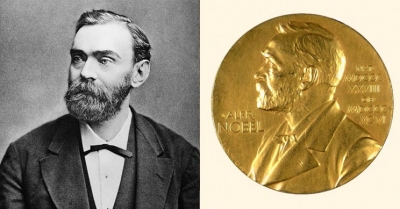
Alfred Nobel, a Swedish chemist, invented dynamite in 1867 and gelignite in 1875. During his early experiments his laboratory blew up, killing Nobel’s younger brother and four workers.
Nobel made a huge fortune out of the manufacture of explosives and left the biggest part of the money for annual awards called Nobel Prizes. The seven prizes for physics, chemistry, are economics, physiology or medicine, literature and peace.
To make the handling of nitroglycerine safer Alfred Nobel experimented with different additives. He soon found that mixing nitroglycerine with kieselguhr would turn the liquid into a paste which could be shaped into rods of a size and form suitable for insertion into drilling holes. In 1867 he patented this material under the name of dynamite. To be able to detonate the dynamite rods he also invented a detonator (blasting cap) which could be ignited by lighting a fuse. These inventions were made at the same time as the diamond drilling crown and the pneumatic drill came into general use.
Together these inventions drastically reduced the cost of blasting rock, drilling tunnels, building canals and many other forms of construction work.
The market for dynamite and detonating caps grew very rapidly and Alfred Nobel also proved himself to be a very skillful entrepreneur and businessman. By 1865 his factory in Krümmel near Hamburg, Germany, was exporting nitroglycerine explosives to other countries in Europe, America and Australia.
Credit : Nobel Prize
Picture Credit : Google




